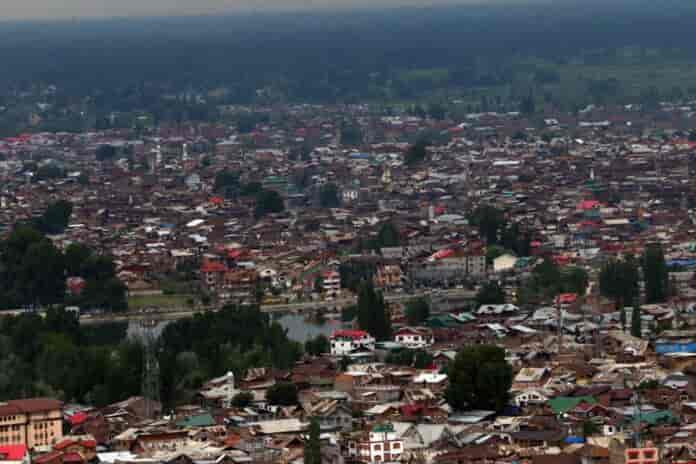Kashmir’s language, popularly known as ‘Koshur’, is spoken by close to eight million inhabitants of the valley of Kashmir. Like any other vernacular language, Koshur vividly captures the unique identity of the people and the Kashmiri culture.
Koshur language is a profound medium to bring Kashmir’s traditions to life and disseminate its folklores, literature and social values. The language is a critical part of the Dardic languages which are primarily spoken in Eastern Afghanistan, Pakistan’s Khyber Pakhtunkhwa and valleys of Chenab and Kashmir.
Over the years, the language has become a channel for Kashmir’s commerce and it has influences from Sanskrit, Urdu and sometimes, English. Benjamin Lee Whorf, an American linguist, worked extensively on the structures of language and how its speakers perceive the world.
Writing about the relationship between human language and human thinking, and how language shapes our innermost thoughts, Whorf says that our perception of the world and our ways of thinking about it are deeply influenced by the structure of the languages we speak.
However, Koshur is not unfamiliar to the recent disruptions in the medium of instruction at schools, universities and social settings in general, and its impact on native languages. According to experts, the decades-long conflict in Kashmir has played a significant role in the decline of Koshur because it has halted attempts at revival and preservation by various organisations.
Hopes of Preservation
Dr. Syed Iftikar, Editor of the Encyclopaedia and Dictionary Project at Jammu and Kashmir Academy of Art, Culture and Language, said the organisation has been working hard to promote the language in the valley.
“We work in close collaborations with the emerging writers, poets and musicians and assist researchers of Kashmiri language and history at institutions.” Iftikar said.
The academy also helps in publishing books. Iftikar said that the academy provides subsidies and tries to alleviate the cost of printing books. “We’ve often paid for printing at least half the number of books, novels or travelogues which help Kashmiri writers in the valley,” he said.
Asked about some emerging writers or poets from the valley whose talent is recognized by the academy, Iftikar said that there are young kids who are taking the language forward and that too “with a lot of success.”
“Sagar Nazir is one of the finest examples of this. In 2019, he went on to win the Sahitya Akademi Yuva Puraskar. You must read his work, if you haven’t,” Iftikar said, with a sense of pride.
“Not only him,” he continued, “Nighat Sahiba is another poet who has remarkable potential.”
Interestingly, Iftikar said that although the conflict had distanced young kids from schools and the academy faced a lot of difficulties in addressing it, it served as “a muse for the writers too.”
Using internet as a medium for preservation
Adbi Markaz Kamraz, one of the top literary organisations in Kashmir, has intensified its efforts in promoting and preserving Koshur.
“Because of COVID-19 restrictions, our organisation can’t function to its full potential. However, our resolve is strong,” said Mohammad Ameen Bhat, an acclaimed play-writer, who recently became the president of Adbi Markaz Kamraz.
The organisation hosted two online programmes on 13 and 14 June 2021 and according to Bhat, “Kashmiris and people who love Kashmiri culture and language from all over the world participated in the two-day event.”
“The event was formed around the idea of Koshur and how to preserve it,” Bhat said. The organisation has also taken help of the Kashmiri press to promote Koshur and “the utmost needs to preserve it.”
The organization has big plans of using the internet space as another important avenue for encouraging the language among the Kashmiri youth.
“We are fascinated by the ease with which Google can adapt to various languages. We see people with different languages accessing Google with a lot of ease in their own vernaculars. So, we thought, why not do this for Kashmiri language too?” Bhat said.
He further said that the organisation has been deliberating on this issue and within next three months, they’ll be “hopefully” much closer to realising it.
Bhat says that the potential of the internet hasn’t been realised in Kashmir and recurring shutdowns also cause a lot of problems. However, he is optimistic and looks forward to a future where Kashmir reaps the true benefits of internet connectivity.
“Everything has gone virtual and online. It will benefit our language in the long run by ensuring connectivity between our people,” he said.
Both Bhat and Iftikar have welcomed the new National Education Policy 2020. The policy, which was approved by the Government of India on July 29, 2020, has recommended that “wherever possible the medium of instruction in schools until Grade V — preferably until Grade VIII — should be the mother tongue or the local or regional language.”
“It’ll definitely help our cause of preservation of Kashmiri language,” Bhat said.




